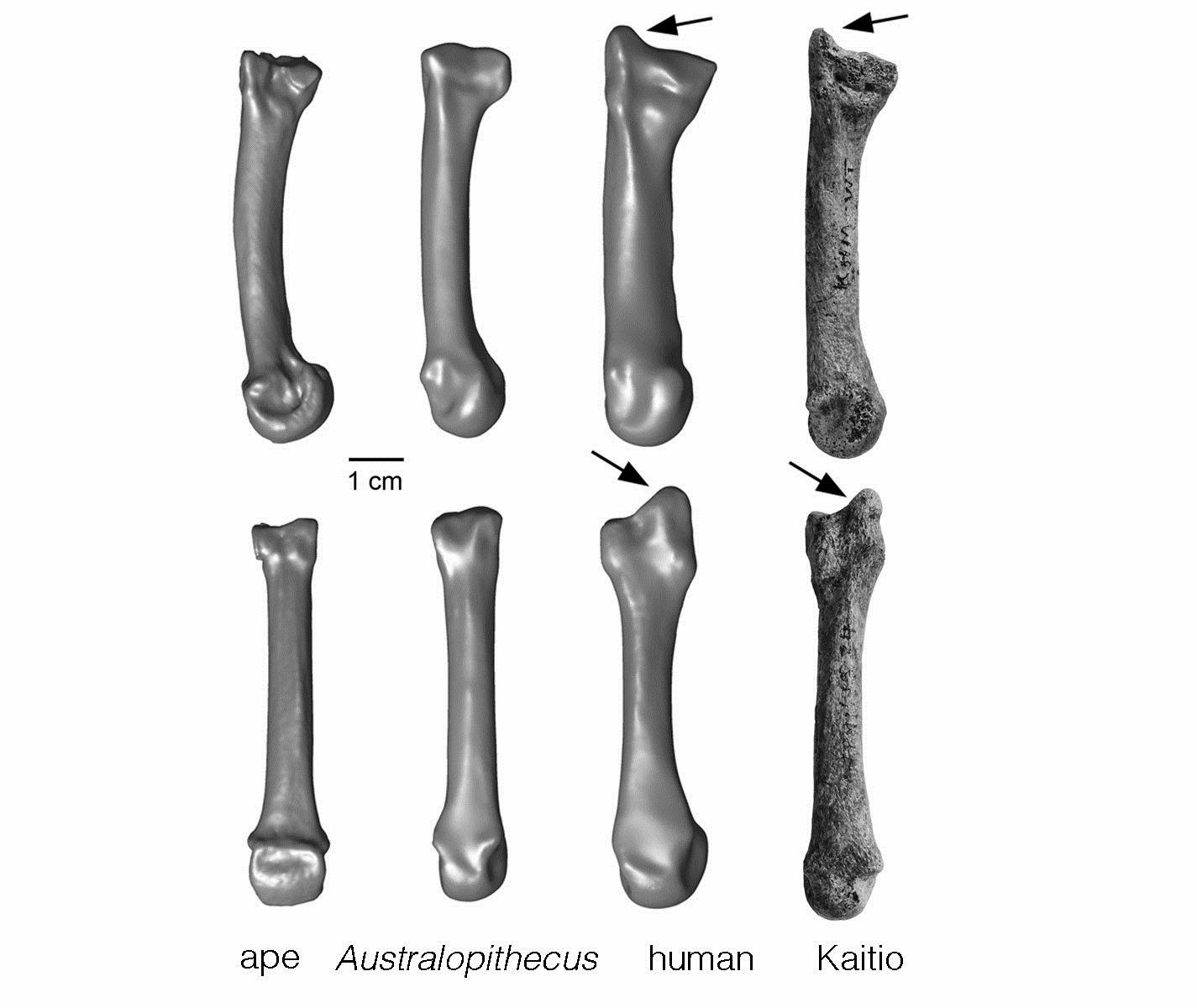The Prehistoric Archaeology Blog is concerned with news reports featuring Prehistoric period archaeology. If you wish to see news reports for general European archaeology, please go to The Archaeology of Europe Weblog.
Wednesday, December 18, 2013
1.4 million-year-old fossil human hand bone closes human evolution gap
Humans have a distinctive hand anatomy that allows them to make and use tools. Apes and other nonhuman primates do not have these distinctive anatomical features in their hands, and the point in time at which these features first appeared in human evolution is unknown. Now, a University of Missouri researcher and her international team of colleagues have found a new hand bone from a human ancestor who roamed the earth in East Africa approximately 1.42 million years ago. They suspect the bone belonged to the early human species, Homo erectus. The discovery of this bone is the earliest evidence of a modern human-like hand, indicating that this anatomical feature existed more than half a million years earlier than previously known.
"This bone is the third metacarpal in the hand, which connects to the middle finger. It was discovered at the 'Kaitio' site in West Turkana, Kenya," said Carol Ward, professor of pathology and anatomical sciences at MU. The discovery was made by a West Turkana Paleo Project team, led by Ward's colleague and co-author Fredrick Manthi of the National Museums of Kenya. "What makes this bone so distinct is that the presence of a styloid process, or projection of bone, at the end that connects to the wrist. Until now, this styloid process has been found only in us, Neandertals and other archaic humans."
Read the rest of this article...
Subscribe to:
Post Comments (Atom)

No comments:
Post a Comment
Note: Only a member of this blog may post a comment.